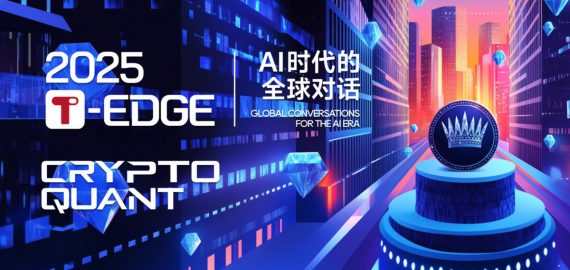Vitalik Buterin Publishes New Article, Suggests Continuing To Scale Ethereum Through Layer 2 Networks


In Brief
Vitalik Buterin has published “Scaling Ethereum L1 and L2s in 2025 and Beyond,” where he suggests continuing to scale primarily through L2s while ensuring they fulfill their promise and explicitly considering the economics of ETH to guarantee it continues to accrue value.

Ethereum co-founder Vitalik Buterin published an article discussing Ethereum’s scaling strategy, titled “Scaling Ethereum L1 and L2s in 2025 and Beyond.” In the piece, Vitalik Buterin addresses two key challenges facing Layer 2 networks.
The first challenge is that the current blob space is barely sufficient to accommodate existing Layer 2 use cases, and it’s even more inadequate for future needs. Additionally, Vitalik Buterin reflects on Ethereum’s initial scaling vision, which involved creating a blockchain with multiple shards, each acting as a replica of the Ethereum Virtual Machine (EVM) processed by a subset of nodes. While Layer 2 networks were intended to implement this vision, a key difference exists in practice: each shard or set of shards is created by a separate entity, treated as a distinct chain by infrastructure, and often adheres to different standards. This has resulted in composability and user experience issues for developers and users alike.
One potential shortcut for scaling would be to abandon Layer 2 networks and rely solely on Layer 1 with higher gas limits, either spread across multiple shards or within a single shard. However, Vitalik Buterin notes that this would compromise Ethereum’s existing social structure, which has been crucial in fostering diverse research, development, and ecosystem-building cultures. Instead, he advocates for continuing the focus on Layer 2 networks, ensuring that they live up to the promise they were designed to fulfill.
In order to achieve effective scaling, Layer 1 must focus on accelerating the scaling of blobs, as well as implementing moderate scaling of the EVM and increasing the gas limit. This will ensure that Layer 1 can continue to handle essential activities even in a Layer 2-dominated environment, such as proofs, large-scale decentralized finance (DeFi) operations, deposits and withdrawals, mass exit scenarios, keystore wallets, and asset issuance.
At the same time, Layer 2 networks must continue to improve security. The same security guarantees expected from sharding—such as censorship resistance, light client verifiability, and a lack of trusted parties—should be ensured within Layer 2 networks.
Interoperability improvements are also critical for Layer 2 networks and wallets. This involves standardizing and accelerating features like chain-specific addresses, message-passing protocols, bridge standards, efficient cross-chain payments, and on-chain configurations. The Ethereum ecosystem should feel unified rather than fragmented into multiple separate blockchains. Additionally, deposit and withdrawal times for Layer 2 networks must be faster.
While meeting basic interoperability requirements, the diversity of Layer 2 networks is valuable. Some networks will be governance-minimized rollups running exact copies of the Layer 1 EVM, while others will experiment with different virtual machines (VMs) or function more like servers, leveraging Ethereum for enhanced security. A broad spectrum of Layer 2 solutions is necessary.
Furthermore, it is essential to consider the economic aspects of ETH. Ethereum must continue to accrue value even in a Layer 2-heavy world, with strategies that address diverse models of value accrual.
Economics Of ETH: Multi-Pronged Strategy Suggested To Cover Sources Of ETH’s Value As Triple-Point Asset
Regarding the economics of ETH, Vitalik Buterin highlighted the importance of pursuing a multi-faceted strategy to maximize the value of ETH as a triple-point asset. This approach would aim to address all key potential sources of ETH’s value within the broader Ethereum ecosystem, including both Layer 1 and Layer 2s.
One central aspect of this strategy could involve solidifying ETH as the primary asset in the Ethereum economy, supporting its use as the main collateral for applications. Another could be encouraging Layer 2 solutions to incorporate ETH by allocating a portion of their transaction fees to ETH-related activities. This could be achieved through various mechanisms such as burning a percentage of fees, permanently staking them, or donating proceeds to public goods within the Ethereum ecosystem.
Additionally, the strategy could include backing certain rollups, particularly as a means for Layer 1 to capture value through miner extractable value (MEV). However, it is important not to force all rollups to be based on this model, as it may not be suitable for all types of applications. This should not be viewed as the sole solution to the problem.
Vitalik Buterin also suggested increasing the blob count and considering the introduction of a minimum blob price, viewing blobs as another potential source of revenue for Ethereum. For instance, if the average blob fee over the past 30 days remained consistent and the blob count increased to 128, Ethereum could potentially burn around 713,000 ETH annually. However, this outcome is not guaranteed, so it should not be assumed to be the primary solution.
Disclaimer
In line with the Trust Project guidelines, please note that the information provided on this page is not intended to be and should not be interpreted as legal, tax, investment, financial, or any other form of advice. It is important to only invest what you can afford to lose and to seek independent financial advice if you have any doubts. For further information, we suggest referring to the terms and conditions as well as the help and support pages provided by the issuer or advertiser. MetaversePost is committed to accurate, unbiased reporting, but market conditions are subject to change without notice.
About The Author
Alisa, a dedicated journalist at the MPost, specializes in cryptocurrency, zero-knowledge proofs, investments, and the expansive realm of Web3. With a keen eye for emerging trends and technologies, she delivers comprehensive coverage to inform and engage readers in the ever-evolving landscape of digital finance.
More articles

Alisa, a dedicated journalist at the MPost, specializes in cryptocurrency, zero-knowledge proofs, investments, and the expansive realm of Web3. With a keen eye for emerging trends and technologies, she delivers comprehensive coverage to inform and engage readers in the ever-evolving landscape of digital finance.


















































